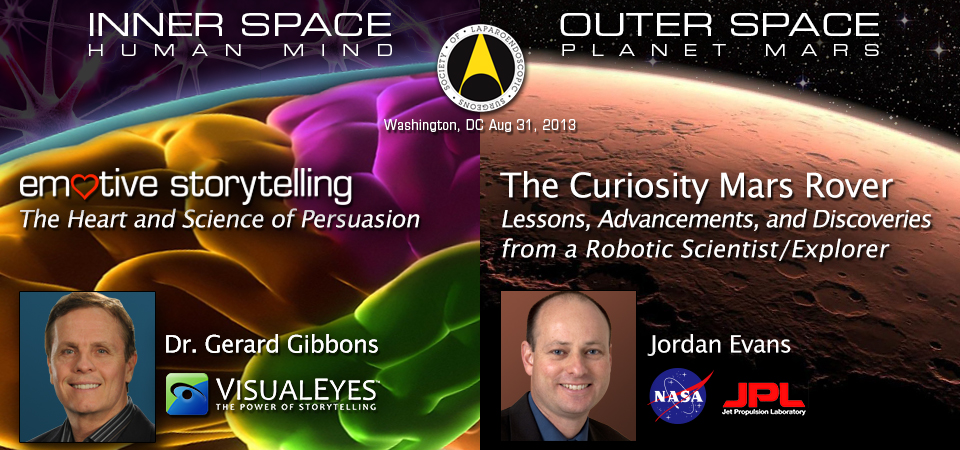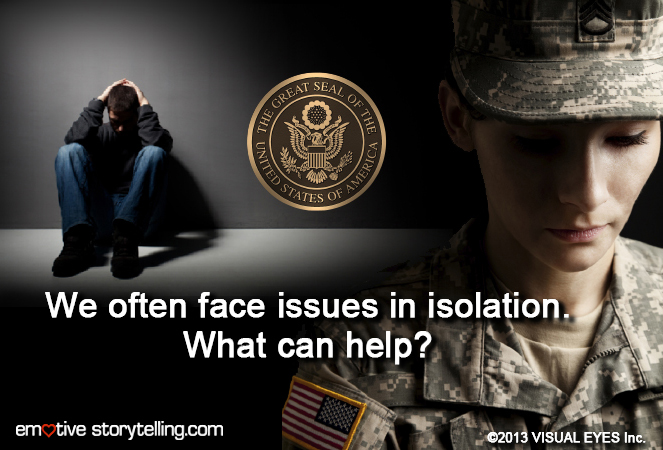Let me tell you a story about what a guy named Peter Guber has learned about storytelling. Peter Guber is a successful film producer whose films have earned over 3 billion dollars and have captured 50 Academy Award nominations. He is also an owner of two major league sports franchises. So he’s got some cred. Continue Reading →
Home » Persuasion » Page 2
Archive | Persuasion
The Best Story Wins

The Best Story Wins
Years ago, mealtimes in many homes meant story time – retellings of work experiences, report cards and bargains. When friends, uncles and aunts came to visit and mealtimes were longer, there was more storytelling, gossiping and laughing. (And yes, crying and arguing were part of those stories, too.) Continue Reading →
Dr. Gerard Gibbons Speaks at National Surgical Symposium about Emotive Storytelling and Narrative Communication

Dr. Gerard Gibbons CEO Visual Eyes Inc. & Jordan Evans JPL / NASA present at Society of Laparoendoscopic Surgeons.
MINIMALLY INVASIVE SURGERY WEEK 2013
ANNUAL MEETING & ENDO EXPO
RESTON, VA (WASHINGTON DC)
Future Technology
Minimally Invasive Surgery Week
Emotive Storytelling and Narrative Communication were the first critical human technologies, fire came later. Listening to stories and telling them helped our ancestors to live humanly – to be human. But somewhere along the way our ability to tell stories was lost. Continue Reading →
Emotive Storytelling: Thwart the Negativity Bias

We face issues in isolation. Despite the fact that our healthcare system, mental health treatment models and behavioral health interventions are often face-to-face centered or group support-focused, most people face their issues alone. Problems are most challenging when people are in their own space, place and moment. That means without their spouse, friends or healthcare provider nearby. Continue Reading →
King Cognos and The Wrong Brain™
King Cognos and The Wrong Brain™ ©2013
Let us tell you a story. In fact, even better… a fairy tale! Once upon a time long ago in a kingdom far away, there were no written words. Just stories — and everything important was taught through them. Generation after generation shared and passed on these stories. Continue Reading →
The Healing Power Of Stories
Our team here at EmotiveStorytelling.com has just spent two days filming and recording the stories of eleven Veterans, most of whom have seen and survived the worst of combat in Iraq and Afghanistan. It was an extraordinary experience that deeply touched all of us who were involved. Each of these Vets has suffered lasting consequences of their combat experience, including Post-Traumatic Stress, mTBI and other emotional pain associated with combat or trauma. Continue Reading →
Healing Stories from Survivors and Warriors #3
We’d like to show you an example of a small part of an emotive story focusing on how emotions can be used to provide a powerful resolution to a story. Healing stories, like most stories, have three elements of plot: Conflict which identifies the problem to be solved; Climax, the point of highest tension, and Resolution, the end of the story. In this clip you see the sad resolution of a story about suicide. This is indeed the end of the story.
Continue Reading →
The Rider and the Elephant

The Rider and the Elephant
Life presents an endless opportunity for rational choice to confront the weakness of will. This endless challenge defines and shapes us for better or worse. The essence of human behavior change resides at this nexus.
To appreciate the basis for human behavior is it helpful, if not essential, to the observe the relationship that exists between the emotive and cognitive mind.
Emotive Storytelling: Stories We Tell, Tell On Us
I’d like to tell you a story. A psychologist decided he needed to learn some more about how his patient was thinking, so he chose to do an assessment using the Rorschach Ink blot test. You know, those cards with ink blots on them that are just ink blots? As he presented the first card for the patient to examine, the psychologist asked him to describe what he saw. Without much delay, the patient said “it looks like a couple having sex.”
Emotive Storytelling: Stories We Tell, Tell On Us – Video
I’d like to tell you a story. A psychologist decided he needed to learn some more about how his patient was thinking,– so he chose to do an assessment using the Rorschach Ink blot test. You know, those cards with ink blots on them that are just ink blots? As he presented the first card for the patient to examine, the psychologist asked him to describe what he saw. Without much delay, the patient said “it looks like a couple having sex.”

